X
wikiHow is a “wiki,” similar to Wikipedia, which means that many of our articles are co-written by multiple authors. To create this article, 10 people, some anonymous, worked to edit and improve it over time.
There are 13 references cited in this article, which can be found at the bottom of the page.
This article has been viewed 121,431 times.
Learn more...
Calves may develop scours due to bacterial or virus infections. Scours is known as "calf scours" or neonatal calf diarrhea. The primary causes of scours include: Rota virus, Corona virus, Cryptosporidium parvum, Salmonella, and Escherichia coli.[1]
Steps
-
1Determine if treatment is required. Calves that are moving around in the pasture, with their tails up, probably do not need treatment. Check to see if the diarrhea is yellow or white. If this is the case, treatment is probably not needed.[2]
-
2Determine if the calf is looking listless. Calves that are lethargic or not participating much in the playful activities with other calves are a red flag to pay attention to. Calves that are also losing condition are also cause for alarm.[3]Advertisement
-
3
-
4Determine the calf's body temperature. A normal body temperature ranges from 100.5 °F (38.1 °C) to 102.5 °F (39.2 °C). Anything outside of this range is a sign for treatment.[6]
-
5Separate the sick calf or calves from the healthy herd. You'll want to do this to avoid spreading the disease further.[7]
-
6Administer fluids using your veterinarian-approved electrolyte solution. You may need to inject the fluids via IV or orally. Follow the package directions when mixing up the solution.[8]
- Feeding the calf water will not work because it will simply pass through his system and not be completely absorbed.[9]
-
7Follow up with antibiotics if approved by your vet.[10]
-
8Follow appropriate nursing care protocol using your vet's guidelines. This may include providing shelter, feed, and a warm place to sleep.
- A drawback of providing shelter is maintaining infectious control. You will have to work extra to get rid of soiled bedding and disinfect everything that a calf will touch, from the floor to the fence panels and even the feed bucket.[11]
Advertisement
Community Q&A
-
QuestionShould I move heifers to a clean pasture, even though cold will be a factor?
 Community AnswerNot a great idea if you don't have a portable shed and bedding to go with it. Clean the barn or stall out and keep replacing old straw with the new so they stay warm. Cold calves won't be healthy calves if they don't have shelter and bedding to lay in. A south-facing shed is perfect for them to stay warm, if you don't have a barn or stable, out in a field or pasture.
Community AnswerNot a great idea if you don't have a portable shed and bedding to go with it. Clean the barn or stall out and keep replacing old straw with the new so they stay warm. Cold calves won't be healthy calves if they don't have shelter and bedding to lay in. A south-facing shed is perfect for them to stay warm, if you don't have a barn or stable, out in a field or pasture. -
QuestionI have 300 calves, all in separate cages. Their bedding is sand. How can I manage scour cases?
 Community AnswerUse straw or shavings for bedding instead of sand and clean the bedding out each day. Sand is a breeding ground for bacteria. Switching to proper bedding will solve a large part of your scour problem.
Community AnswerUse straw or shavings for bedding instead of sand and clean the bedding out each day. Sand is a breeding ground for bacteria. Switching to proper bedding will solve a large part of your scour problem. -
QuestionWhat is the best injectable medicine for calf scours?
 Community AnswerThere is no injectable medicine available. Scour boluses are available, but generally they're for young calves with bacterial infection of the gut. You may also need to use electrolytes and make sure bedding is cleaned out regularly. Scours is just a symptom of a bunch of different possible diseases or conditions, from feeding too much milk to a gut bacterial infection caused by E. coli, Campylobacteria, Salmonella, etc., or some other illness. Please talk with your vet about treating scours in your calves.
Community AnswerThere is no injectable medicine available. Scour boluses are available, but generally they're for young calves with bacterial infection of the gut. You may also need to use electrolytes and make sure bedding is cleaned out regularly. Scours is just a symptom of a bunch of different possible diseases or conditions, from feeding too much milk to a gut bacterial infection caused by E. coli, Campylobacteria, Salmonella, etc., or some other illness. Please talk with your vet about treating scours in your calves.
Advertisement
Warnings
- Promptly contact your vet if 5 percent of your calves have scours and require treatment.[14]⧼thumbs_response⧽
- Contact your vet if greater than 2 percent of your calves have died. Stool samples and freshly dead calves can be examined to determine the appropriate treatment for your herd.[15]⧼thumbs_response⧽
Advertisement
References
- ↑ https://www.ncbi.nlm.nih.gov/pmc/articles/PMC3973752/
- ↑ https://vikaspedia.in/agriculture/livestock/general-management-practices-of-livestock/common-animal-diseases-and-their-prevention-and-treatments
- ↑ https://animalscience.tamu.edu/wp-content/uploads/sites/14/2012/04/beef-calf-scours.pdf
- ↑ https://extension.umn.edu/beef-health/beef-calf-scours
- ↑ https://www.beefresearch.ca/blog/calf-911-dehydration-video/
- ↑ https://extension.umn.edu/dairy-youngstock/dairy-calf-scours
- ↑ https://www.zoetisus.com/conditions/beef/neonatal-calf-diarrhea.aspx
- ↑ https://www.frontiersin.org/articles/10.3389/fvets.2020.603358/full
- ↑ https://www.ncbi.nlm.nih.gov/pmc/articles/PMC7115579/
- ↑ https://ucanr.edu/sites/UCCE_LR/files/152012.pdf
- ↑ https://digitalcommons.unl.edu/cgi/viewcontent.cgi?article=1217&context=rangebeefcowsymp
- ↑ https://www.sciencedirect.com/science/article/pii/S1871141317302342
- ↑ https://www.sciencedirect.com/science/article/pii/S0022030262896337/pdf?md5=03ccd9461d2874a88785c33fae2e0389&pid=1-s2.0-S0022030262896337-main.pdf
- ↑ https://ucanr.edu/sites/UCCE_LR/files/152012.pdf
- ↑ https://ucanr.edu/sites/UCCE_LR/files/152012.pdf
About This Article
Advertisement
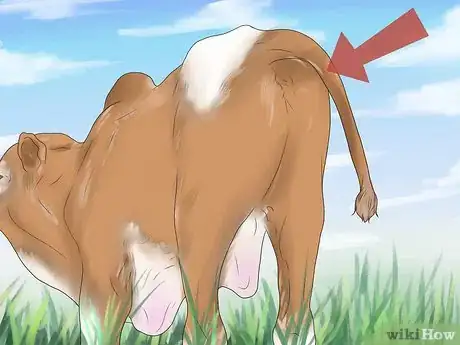
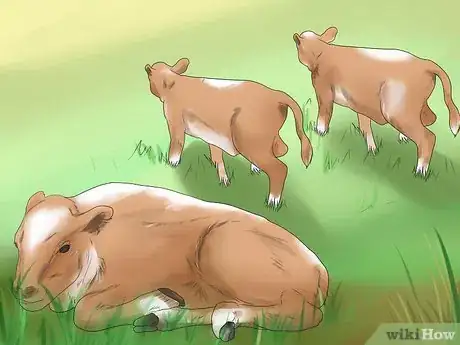
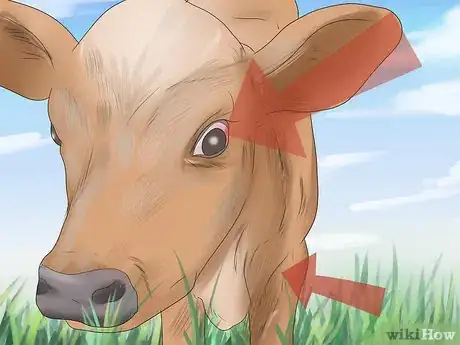
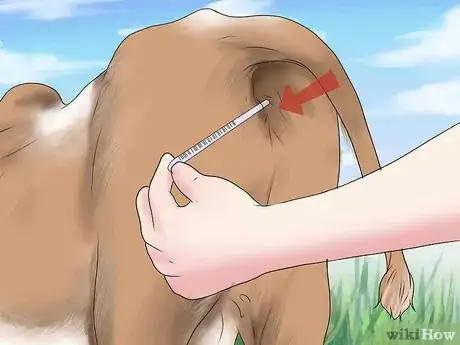

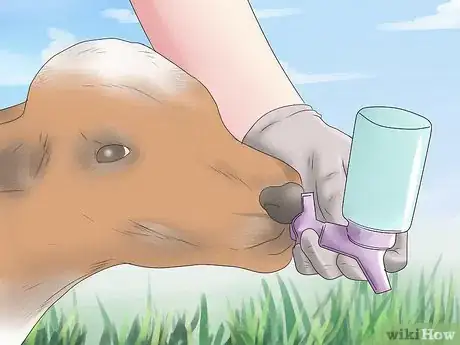
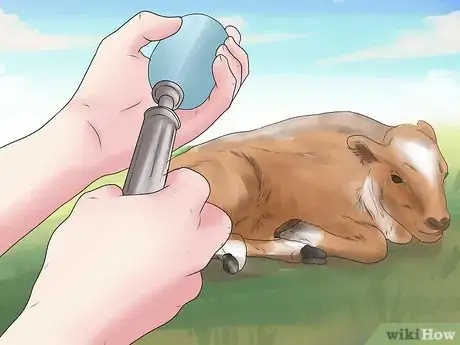
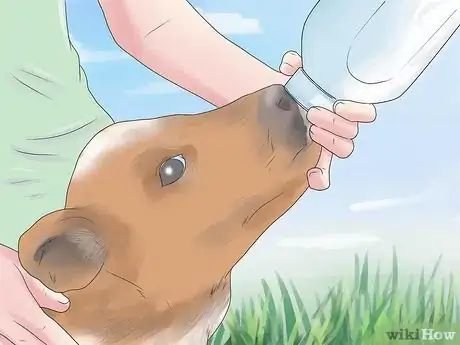

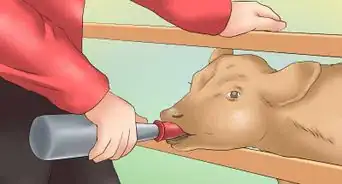


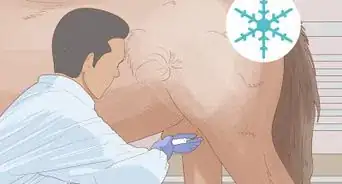
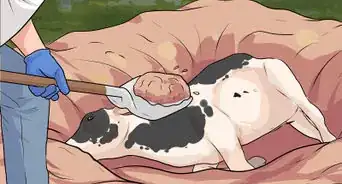











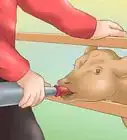

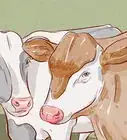



































Medical Disclaimer
The content of this article is not intended to be a substitute for professional medical advice, examination, diagnosis, or treatment. You should always contact your doctor or other qualified healthcare professional before starting, changing, or stopping any kind of health treatment.
Read More...